The lifeblood of an efficient network infrastructure in today’s dynamic digital world is large-scale data transmission. In a growing enterprise or data center, a strategically selected 48-port gigabit Ethernet switch ensures performance continuity without restrictions on future growth. From the multitude of models featuring an array of specifications and intended use scenarios, choosing one can quickly become overwhelming. We aim to provide you with guidance that matters, presenting a clear path on what deserves focus. Covering everything from performance milestones, sophisticated port arrangements, energy consumption, to strength and security features, this guide is intended to prepare you to make the best decision for your networking needs. Now you can confidently improve your business network. Everything mentioned above can be achieved with the right information and guidance.
What is a 48-port gigabit Ethernet switch?
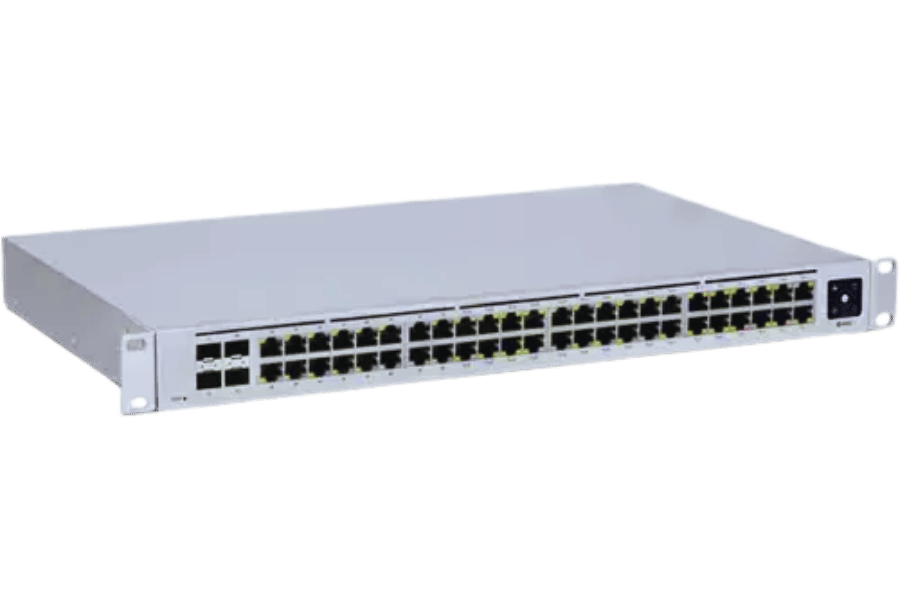
A gigabit Ethernet switch with 48 ports serves as a networking device that connects multiple components within a local area Network (LAN). It has 48 ports which can each transmit data at a speed of 1 Gb/s. This type of switch is useful for offices, networks, or data center environments where many devices require high-speed data transfer and connectivity. It improves communication between devices in order to streamline data sharing, network management, and optimize performance.
Understanding the Basics of an Ethernet switch
An ethernet switch is a network device that connects different devices within a Local Area Network (LAN) and facilitates effective communication. An ethernet switch establishes an efficient communication routed through the receipt of one or more data packets from various devices, followed by sharing them with their intended destinations in the network. Switches manage the flow of data to enhance the efficiency of networks and reduce the possibility of delays. They are a must in any current wired network for maintaining accuracy as well as safety in data flows between computers, servers, printers, and other peripherals.
Key Features of a 48-port gigabit switch
Elevated Port Density
A gigabit switch with 48 ports ensures ample connectivity, especially for big networks. These switches can accommodate 48 physical RJ45 Ethernet interfaces, which enable connections for numerous devices like computers, servers, and access points. The scalability associated with the high port count, alongside accommodating additional network resources and expansion, ensures that the network can grow seamlessly without additional hardware.
Gigabit Ethernet Speeds
As these switches can cater to the needs of large networks, each port ascribed can provide data transfer rates from 1 Gbps (1000 Mbps), beneficial for advanced operations including video conferencing, file sharing, and cloud computing. Other sophisticated models alongside this feature may also have port trunking, where several ports are combined to maximize throughput.
Advanced Switching Features
Additional features for a 48-port gigabit switch include Layer 2 and Layer 3 switchign. Other layer 2 features such as VLAN, Spanning Tree Protocol (STP), and port mirroring enhance network segmentation and redundancy. Routing capabilities on Layer 3 make facilitates inter-VLAN routing for communication among VLANs improving the efficiency of the overall network.
Support for Power over Ethernet (PoE)
Selected models are equipped with PoE or PoE+ capabilities that allow the switch to deliver power to peripherals like IP cameras and VoIP phones. This eliminates the need for auxiliary power sources, which simplifies installation and reduces operational costs. Depending on the model, the budgets set for PoE power might be in the range of 370 watts to above 740 watts.
Use of Energy
Modern 48-port switches incorporate Energy Efficient Ethernet (EEE) to lower power consumption. Modern switches with 48 ports also integrate Energy Efficient Ethernet (EEE) to lower power consumption. With effective link control, non-utilized ports are turned off, lowering the consumption of electricity, which reduces operational cost without degrading performance.
Broader Scalability with Flexible Deployment Options
These switches are often equipped with features like port stacking and other uplinks go up to 10 Gbps SFP/SFP+. Stacking provides the ability for multiple units to operate as one logical switch which simplifies the management of large networks. High rate uplink sockets guarantee integration with other network systems and support expansion.
Security Features and Quality of Service (QoS)
Security features rot prevent the network from being breached include advanced ACLs, port control, and DHCP snooping. Data traffic prioritization is guaranteed and the delivery optimization for applications that rely on latency, like voice and video, boost performance targeted for lower Qos levels.
Rugged Hardware Architecture
A great number of 48-port gigabit switches are built for grid style, rack mounted placement and are within the 19 inch standard boxed form factor used throughout the data industry. They make use of a sturdy physical design complete with cooling systems and often incorporate additional stacks of power supply units for peak availability in enterprise situations.
These factors listed above are the reasons which make 48-port gigabit switches certain for mid sized and large corporations, data centers, and enterprises which have sophisticated and advanced needs for configuration and networking infrastructures.
Comparing Managed vs Unmanaged Switches
It’s essential to know the differences between managed and unmanaged switches for making network switch decisions. Managed switches offer extensive configurability, allowing an administrator to adjust them for security and performance. They use advanced features like VLANs (Virtual Local Area Networks), Quality of Service (QoS) prioritization, and link aggregation through LACP (Link Aggregation Control Protocol). Managed switches also allow monitoring and control remotely with SNMP (Simple Network Management Protocol), so network traffic management has greater visibility and control. These features are perfect for an enterprise and environments with more demanding networking requirements.
Unlike managed switches, unmanaged switches work with a “plug-and-play” method, having no advanced settings or remote management capabilities. These simple devices have lower cost and are meant for smaller networks and non-critical applications that do not require advanced features and basic connectivity suffices. They do not support VLAN and QoS; however, user intervention is minimal which makes standard data transmission reliable. These devices are mainly found in home office or small office environments that have basic networking needs.
Managed switches offer superior scalability and performance. For instance, they support higher port counts, enabling network managers to control traffic streams through VLANs, which enhances both efficiency and security. Recent benchmarks suggest that managed switches offer better throughput with complex multi-layer networks than unmanaged switches. However, unmanaged switches are more economical and sufficient for less sophisticated network architecture. The decision comes down to the specific requirements, available funds, and the size of the network to be deployed.
Why Choose a 48-port Gigabit Ethernet Switch?
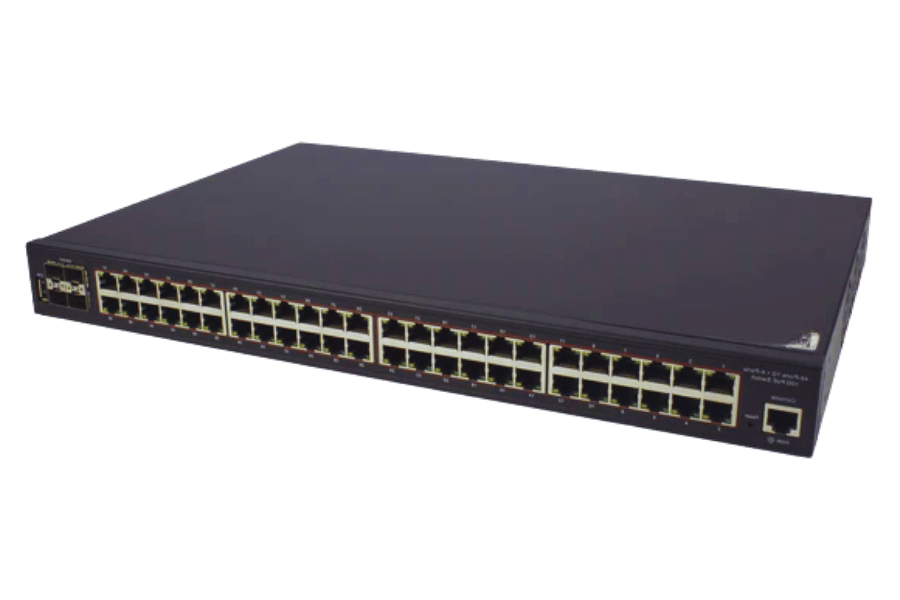
Benefits of High Port Density
The high port density in a 48-port Gigabit Ethernet switch provides many benefits, especially in an enterprise and a data center environment. It allows several devices and network divisions to be integrated into a single switch, decreasing the amount of physical hardware and simplifying cabling. This configuration can considerably improve operational workflows by reducing clutter and maintenance activities.
From a performance standpoint, the newer 48-port switches are capable of transporting colossal volumes of data with high transfer rates and minimal delays. Many top-tier models provide switching capacities exceeding 170 Gbps, which guarantees that communication between connected devices is functional, even under significant workloads. Also, advanced technologies such as hassle-free and efficient Quality of Service (QoS) and link aggregation control protocol (LACP) further improve the distribution of traffic within high density networks, ensuring stable connections along with the prioritization of critical data.
The high port density enables better scalability which is critical for most organizations. Businesses can fulfill expanding network requirements with a 48-port configuration while postponing the need to purchase addtional hardware. This resultant flexibility makes it perfect for rapidly developing organizations and scenarios that demand adaptable infrastructure.
Lastly, modern devices often include features that greatly decrease energy consumption, such as Energy Efficient Ethernet (EEE) technology, which can cut down on power use during low traffic periods and helps in reducing costs. High-density switches are more than just connection points; they are a complete answer to contemporary networking needs driven by high-performance requirements.
Scalability and Network Expansion
For organizations contemplating expansion, scalability is key while designing and maintaining contemporary network infrastructures. High-density switches serve a central purpose in enabling effortless expansion of networks tailored to increasing needs due to modular architecture and stackable configurations. For instance, modular switches allow pouring resources through additional line cards, more ports, to be added, and in enhanced cost efficiency and sustaining long-term investments.
In addition to the points stated above, many high-density switches now support virtual stacking technology, allowing multiple physical switches to function as one logical unit. This capability aids in enhancing network management; simplifying scalability when bandwidth requires it, alongside reducing hardware footprint. Recent industry data revealed the global network switch market is predicted to grow from 2023 to 2030 at a compound annual growth rate (CAGR) of 6.2%, which will be driven by the ubiquitous adoption of IoT devices and cloud-based services.
The most recent switches also have high port capacity. Many of them have 100 Gbps or even 400 Gbps connections. For organizations that deal with extensive amounts of information or support high-resource applications, these speeds are extremely helpful. In addition to this, modern technologies such as Dynamic VLAN assignment enable automated configuration of the network which allows it to perform with optimal efficiency at all times.
Modern switches improve scalability even further with the application of more sophisticated technologies such as SDN (Software Defined Networking) and machine learning which actively optimize traffic and foresee bottlenecks. This maintains optimal performance as the complexity and size of the network increases which relative to the speed at which a company can maneuver in today’s data-driven market, is essential.
Cost-Effectiveness of a 48-port Setup
For medium to large enterprises, a 48-port switch setup is a viable option regarding network infrastructure costs. Such setups allow multiple devices being connected through one switch, which minimizes hardware expenditure. Many modern 48-port switches offer additional features such as Power Over Ethernet (PoE), which further lessens the operational costs by providing electricity to IP cameras, phones, and wireless access points without the need for separate power adapters.
Furthermore, the high-density configuration is still advantageous for data centers and server rooms due to optimized space. In relation to Total Cost of Ownership (TCO), streamlined management and the reduction of cables makes maintenance more cost effective over time. Recent studies showcase how 48-port switches are also benefiting from modern energy-saving initiatives due to their outstanding energy efficiency. Organizations wishing to prioritize budget management alongside operational efficiency experience long term gains.
Are PoE Capabilities Important for Your Network?
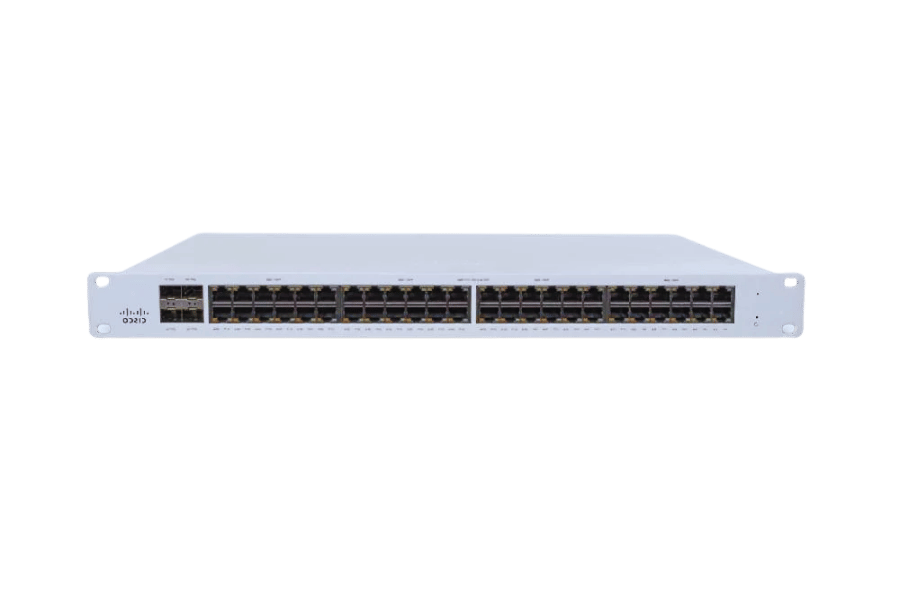
Understanding PoE and Non-PoE Switches
Power over Ethernet (PoE) switches offer unified power and data connectivity through a single Ethernet cable, which simplifies the deployment of networks. This simplification is useful when powering devices such as cameras, access points, and IP phones. Non-PoE switches, however, only provide data transmission and do not offer power, meaning connected devices must have their power supplies. The selection of the two models is dependent upon the needs of the network; PoE switches are useful when there is a need for simplified setups, while non-PoE switches are less expensive where there are no powered devices.
Advantages of Using PoE Switches
Simplified Setup
The adoption of Power over Ethernet (PoE) switches eliminates the need for running separate power lines as they can transmit power and data through a single Ethernet cable. Consequently, installation becomes less expensive and can be completed more rapidly.
Cost Reduction
PoE switches specifically lower the requirements for electrical wiring by combining data and power delivery. These components, thus, improve the cost-efficiency of networks by reducing the resources and manpower required to set up and maintain network systems.
Greater Accessibility
With PoE switches, devices can be placed anywhere without being restricted to placing them next to power outlets, which improves operational efficiency. This characteristic is useful for IP cameras and access points that need to be deployed in remote and difficult-to-access locations.
Network Extension
The addition of PoE-enabled devices can be effortlessly included, permitting extensive scalability along with the advanced features of PoE switches that support scalable network architecture. There is no requirement for major changes to be made in wiring or electric arrangements, so network requirements can be easily met.
Improved Power Systems
Intelligent power distribution systems allow for enhanced power management with connected devices. This ensures effective power delivery, optimizes usage, prevents overload situations, and restricts excessive energy consumption, thereby improving productivity.
Reliability and Centralized Power Control
The PoE switch’s consolidated approach to maintenance transcends routine upkeep and offers the ability to retrofit and enhance the reliability of the network. Integrated backup power solutions, on the other hand, ensure the continuous operation of all powered devices during a power outage.
Support for High-Powered Devices
The availability of PoE+ (802.3at) and PoE++ (802.3bt) standards boosted the functionality of modern PoE switches as they now provide higher wattages to power-hungry devices like PTZ (pan-tilt-zoom) cameras, large monitors, and point-of-sale terminals.
Reduced Downtime
Centralized power delivery increases efficiency by allowing for faster fault isolation and reduction in network downtimes caused by inefficient operational procedures.
PoE switches remain one of the most critical—if not the most critical—innovations in modern networking technologies due to their unparalleled value proposition and ease of use for organizations looking to establish sophisticated, scalable networking infrastructures.
Identifying Power Requirements for Devices
In determining what devices’ power requirements are, the first step is to check the documentation from the manufacturer. Such documents usually have the operating voltage and the power rating in watts or some other unit. If the device is meant to be powered over Ethernet, I check if its IEEE 802.3af or 802.3at standard tier compliance determines what it can draw. I also calculate the total budget for power consumption on the PoE switch to make sure it is capable of providing an adequate supply to all the connected devices without reaching full capacity. This approach guarantees proper functioning and efficiency without compromising the integrity of the network.
How to Enhance Network Performance with 48-port Gigabit switches?
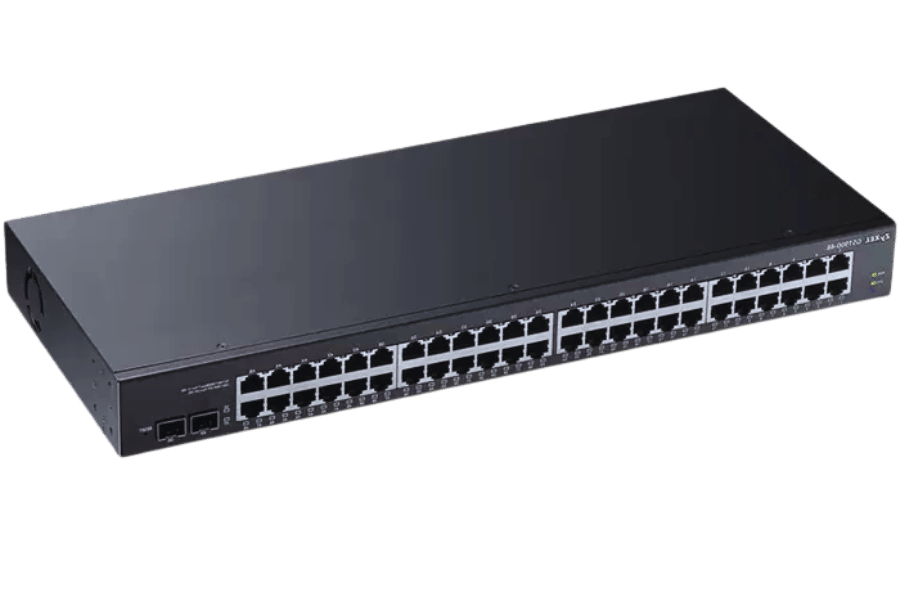
Utilizing VLANs for Better Network Management
Virtual Local Area Networks (VLANs) are crucial for network segmentation and optimization. Through VLANs, an administrator can logically partition the network based on organizational structure, which may include departments, project teams, or security levels by physically isolating broadcast domains. They accomplish this by dividing a physical switch into several isolated broadcast domains. This aids in disseminating traffic by minimizing harmful broadcast traffic, thereby enhancing the network’s effectiveness.
Another distinct benefit is the allocation of bandwidth for critical application traffic such as enforcing strict policies with VLANs. For example, voice traffic can be placed on a dedicated VLAN (commonly called Voice VLAN) which allows for the mitigation of latency and jitter during transmission, thus enabling high-quality VoIP calls.
Research indicates that the use of VLAN may increase operational efficiency by up to 30% in highly networked environments, with diverse and congested traffic patterns. Because they also require communicating switches to remain logically isolated, VLAN tagging, which describes switches in the IEEE 802.1Q standards, provides the needed isolation. The combination of VLANs and QoS policies permits the enforcement of prioritization on high-precedence packets, which further assists in effective traffic control.
VLANs safeguard sensitive data traffic separately tell public-facing segments. Using VLAN Access Control Lists (VACLs) provides an additional protective layer, alleviating internal risk and data breach concerns. A VLAN-enabled network supports bolstered security and simplified administration through centralized control over disparate network segments.
These benefits make configuring VLANs imperative to fully exploit the functionality of 48-port Gigabit switches. With appropriate configuration, VLANs can be turned on and tailored to the distinct needs of the organization, providing the flexibility and adaptability needed for evolving infrastructure demands, with efficiency and security at the forefront.
Optimizing Bandwidth and Throughput
In today’s networking fields, optimally utilizing bandwidth and throughput is critically important for achieving performance. Bandwidth indicates a network’s data transfer capacity, while throughputs indicate the rate at which successful data transfer occurs within a specific timeframe. Network congestion and limited hardware resources are a few of the many factors that can create differences between the two concepts’ throughput.
Applying QoS policies is important to enhance both bandwidth utilization and throughput. Through culled-critical traffic types like video streams and VoIP, QoS guarantees minimal losses for key application packet streams. Furthermore, effective rate limiting helps to maintain equitable bandwidth provisioning, throttled to each user and device, while preventing bandwidth contention.
With the most recent data, there has now emerged the possibility of subscribing to 10 Gbps infrastructure, which would address larger demands for throughput from IoT devices and cloud computing. Need for state IoT and cloud computing also helps to eliminate heaved burdens when subscribing to lower-end 1 Gbps network through having their other end managed under automatic cross-path load balancing.
Protocols and solutions like NetFlow, SNMP, and others enable proper traffic monitoring in real-time, which allows for detection of issues and configuration adjustments on the fly. Also, the use of solid state drives for caching purposes and efficient data transfer protocols, TCP Fast Open, improves the speed of data delivery and responsiveness, which optimizes the number of concurrent requests that can be served.
With a combination of sophisticated equipment and strategic organizational practices, reliable bandwidth and throughput increases alongside sustained performance for demanding workloads become possible.
Implementing QoS for Traffic Prioritization
In today’s networking fields, optimally utilizing bandwidth and throughput is critically important for achieving performance. Bandwidth indicates a network’s data transfer capacity, while throughputs indicate the rate at which successful data transfer occurs within a specific timeframe. Network congestion and limited hardware resources are a few of the many factors that can create differences between the two concepts’ throughput.
Applying QoS policies is important to enhance both bandwidth utilization and throughput. Through culled-critical traffic types like video streams and VoIP, QoS guarantees minimal losses for key application packet streams. Furthermore, effective rate limiting helps to maintain equitable bandwidth provisioning, throttled to each user and device, while preventing bandwidth contention.
With the most recent data, there has now emerged the possibility of subscribing to 10 Gbps infrastructure, which would address larger demands for throughput from IoT devices and cloud computing. Need for state IoT and cloud computing also helps to eliminate heaved burdens when subscribing to lower-end 1 Gbps network through having their other end managed under automatic cross-path load balancing.
Protocols and solutions like NetFlow, SNMP, and others enable proper traffic monitoring in real-time, which allows for detection of issues and configuration adjustments on the fly. Also, the use of solid state drives for caching purposes and efficient data transfer protocols, TCP Fast Open, improves the speed of data delivery and responsiveness, which optimizes the number of concurrent requests that can be served.
With a combination of sophisticated equipment and strategic organizational practices, reliable bandwidth and throughput increases alongside sustained performance for demanding workloads become possible.
What are the Best Practices for installing a 48-port gigabit Ethernet switch?
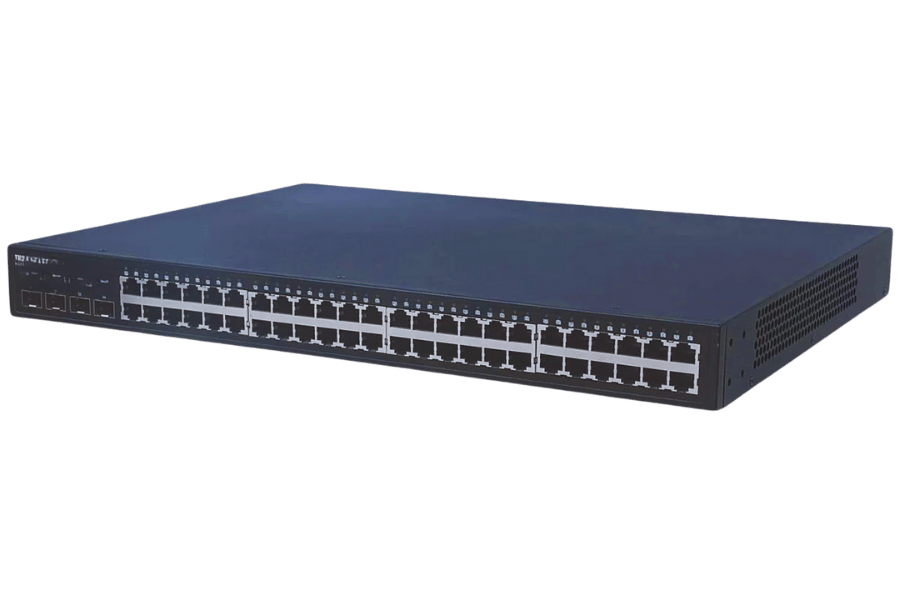
Planning Rackmount Installation
The planning of a rackmount installation for a 48-port gigabit Ethernet switch should include these best practices:
- Verifying available rack space is permantently adequate. The 48-port ethernet switch typically sits at 1U of rack space height which must also be accounted for alongside future needs.
- Maintaining proper ventilation zone switch clearances as per manufacturer’s requirement will allow for optimal heat airflow and assist in overheating mitigation.
- Assecurring the switch with provided rackmount brakes and screws on both top and bottom corner of the unit prevents forwards and backwards physical flex damage.
- Labeling all switch cables, barring power and grounding, helps manual servicing.
- A reliable power connection firmly via UPS enables greatest grade of uninterrupted power whilst properly securing grounding protects from electrical risks.
If all steps are followed closely, reliable mounting and servicing access to the Ethernet switch will be granted while achieving servicing ease.
Cabling and Ethernet Port Configuration
To achieve the configuration of cabling and Ethernet ports, follow these instructions:
- Choose cables carefully: Ensure you are using the required quality of cables. For instance, use Cat 5e, Cat 6, and above. Regardless of the environment and network speed, the recommended length to prevent signal degradation should be observed.
- Port Assignment: Based on the network design and the function of the devices, assign the correct Ethernet ports. For future reference, you may use port labels for identification.
- Verify Connectivity: Connecting the devices and cables to the appropriate Ethernet ports will allow you to streamline the ports for precise markers for signal glitches.
- Maintain Profile: Crossed Ethernet cables should not be bundled closer to power lines/power generating facilities of bands that electromagnetically induce noise.
Fulfilling all these criteria allows success in the configuration of the cables and Ethernet ports.
Ensuring Proper Network Security Measures
Sensitive data requires protective network security policies, as they form the first line of defense against system intrusions. Recent studies indicate that cyber enemy tactics are advancing and developing; thus, a multilayer defense strategy is more urgent than before. Consider the following essential methods:
- Activate Firewalls and Intrusion Prevention System (IPS): Firewalls filter data, allowing or refusing traffic to enter or exit the system based on established rules. They are crucial for incoming and outgoing traffic. Modern firewalls integrated with IPS perform unauthorized access violation monitoring, preventing and detecting breach attempts with current firewalls.
- Adopt Stronger Authentication Methods: Passwords used for authentication are no longer safe; augment security measures with Multi-Factor Authentication (MFA) relying on biometric data, Identity-based Access control, as well as time-based OTPs (one-time passwords).
- Encrypt sensitive data while in transit through the network: Employs protocols like TLS (Transport Layer Security) alongside VPNs (Virtual Private Networks) to guarantee that sensitive documents are securely transmitted over the network. Encryption minimizes the ability deter red interception from malicious actors.
- Update and patch attempt systems on a regular basis: Uncontrolled software vulnerabilities stand out as serious security weaknesses. Ensure all supported systems, applications, and devices, as well as ever-evolving security requirements, are strengthened with a regular patch management process.
- Deploy Threat Endpoint Security Solutions: Endpoint devices with advanced protection enable device-specific threat identification and mitigation using antivirus, anti-malware, and Endpoint Detection and Response (EDR) solutions.
- Network Segmentation Methods: Restrict the scope of a breach by implementing smaller subdivisions, or segments, of the network. Use VLANs or subnetting to control and isolate critical systems from less secure segments.
- Conduct Security Audits and Employee Phishing Training: Assess the posture security of the enterprise with recurring audits while integrating employee awareness and training programs on cybersecurity fundamentals such as phishing and ransomware.
- Monitor Network Activity: Detect and respond to emerging network threats by monitoring Windows or Unix systems in real time using SIEM solutions.
- The most recent data shows a rise in ransomware incidents, estimating 493.3 million reported ransomware attacks worldwide in 2022. Additionally, upwards of 80% of enterprises are contemplating adopting zero-trust frameworks, signaling a shift towards tighter access restrictions across the industry.
Employing the aforementioned practices while remaining alert allows organizations to notably decline their cyber risk profile while maintaining a secure and resilient network infrastructure.
Frequently Asked Questions (FAQs)
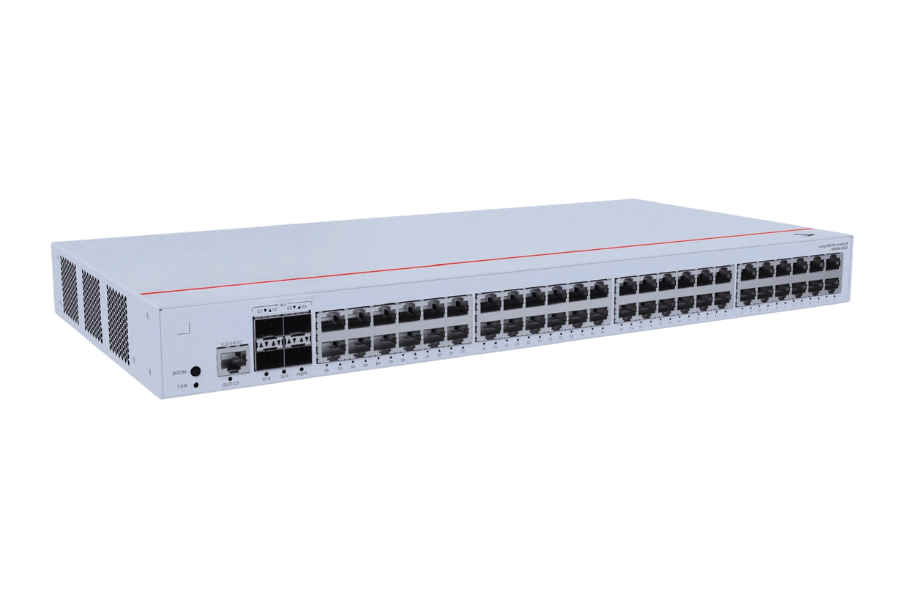
Q: What should I consider when choosing a 48-port Gigabit Ethernet switch?
A: Various factors come into play when picking a 48-port Gigabit Ethernet switch, such as managed versus unmanaged types, VLAN support, compliance with IEEE standards, presence of 4 SFP ports for uplinks, PoE power capabilities, and IGMP snooping along with 802.1X security features. In addition to these, focus on the power supply design, fanless for silent operation, and compatibility with the rest of the devices in the network.
Q: What are the benefits of having SFP ports in a 48-port switch?
A: SFP ports in a 48-port switch provide flexible opportunities for network expansion and inclusion of fiber optic links. Having these ports facilitates the attainment of higher data rates, e.g., 10G, as well as long-distance connections, making these ports optimal for uplinks and network aggregation.
Q: How does a managed switch differ from an unmanaged switch?
A: More sophisticated options such as VLANs, QoS, and port aggregation, as well as remote management via SSH or Telnet are offered by a managed switch. The level of control over traffic, security, and performance monitoring is far superior relative to an unmanaged switch, which has no configuration options.
Q: What is the significance of VLAN support in a 48-port Gigabit switch?
A: VLAN support in a 48-port Gigabit switch permits the division of the network traffic, which provides additional security while also minimizing traffic on the network. In this way, a network administrator can separate different logical networks from each other within the same physical network, which optimizes the efficiency of the network and data management.
Q: How important is PoE power in a network switch?
A: Provides power to the devices on the network, like IP cameras, Wireless access Points, and VoIP phones through one single Ethernet cable while transmitting data which saves on installation costs along with additional expenses of power sockets and makes it more user-friendly.
Q: What does having a 10G SFP support mean for a switch in a network?
A: This means that the switch is capable of handling a 10 Gigabit per second data rate, which ensures high-speed connectivity for other demanding functions and guarantees as technologies grow, the switch will still be relevant.
Q: What does IGMP snooping do to a network switch?
A: Multicast traffic is better managed with IGMP snooping since multicast data will only be sent to devices that specifically requested it. It improves the performance of the network as well as saves loads on the devices.
Q: What is the importance of 802.1X concerning a 48-port switch?
A: 802.1X is a network access control mechanism that enhances security by requiring authentication for devices seeking access to the network. This helps tremendously in restricting access to the network only to useful endpoints.
Q: What is the difference between a Layer 2 and a Layer 3 switch?
A: In addition to basic Layer 2 switching, A Layer 3 switch can perform routing functions between VLANs or subnets. This allows for even more advanced network configurations as integrating different types of networking equipment such as routers, may not be needed.
Q: Why is 802.3x important in a 48-port switch?
A: 802.3x flow control helps alleviate network congestion more than it might contribute to it. Certain periods of traffic flow can be temporarily silenced on a delay, thus preventing saturation.
Reference Sources
1. A 1024-Port Optical Uni- and Multicast Packet Switch Fabric
- By: M. Moralis‐Pegios et al.
- Published in: Journal of Lightwave Technology (2019-02-15)
- Citing: (Moralis‐Pegios et al., 2019, pp. 1415–1423)
Highlights:
- The paper analyzes the scaling of the Hipoλaos optical packet switch architecture to 1024 ports, increasing its capabilities to enable latency-free intra-tray multicasting.
- The switch fabric achieved a 10.24 Tb/s capacity at a line rate of 10 Gb/s with error-free operation at less than 3.4 dB power penalty.
- The architecture permits multicasting to five nodes at 10 Gb/s each, incurring low power penalties at various output ports.
Approach:
- This research included a case study aimed at experimentally testing the latency and throughput performance of the switch architecture as well as network level static evaluation.
2. High-port low-latency optical switch architecture with optical feed-forward buffering for 256-node disaggregated data centers
- By: N. Terzenidis and others
- Article in: Optics Express
- Date Published: 2018-04-02
- Reference Token: (Terzenidis et al., 2018, pp. 8756–8766)
Summary of Major Insights:
- The design is tailored to an optical switch for disaggregated data centers employing a hybrid broadcast-and-select/wavelength routing method for forwarding.
- This architecture maintained a remarkably low latency of 605 ns, high throughput, and demonstrated flawless operation at 10 Gb/s throughput.
- Evident from the experiments conducted, simulations of a 256-node system along with diverse traffic models were analyzed to evaluate the performance of the optical switch.
3. Multicasting in a 256-Port Sub-μsec Latency Hipoλaos Switch Architecture for Disaggregated DataCenters
- By: M. Moralis‐Pegios et al.
- Where Published: 2018 European Conference on Optical Communication
- When: September 1, 2018
- CITATION: Moralis‐Pegios et al, 2018, pp. 1-3
Highlights:
- Current research proves the enabling multicasters optical packet switch with 256×256 port configuration and four packet optical buffering capacity of 10Gb/s data.
- The switch was able to multicast to multiple receiver nodes with low latency and high throughput.
Research Approach:
- The researchers conduct empirical experiments and simulations to evaluate the performance of the switch architecture in a data center context.
